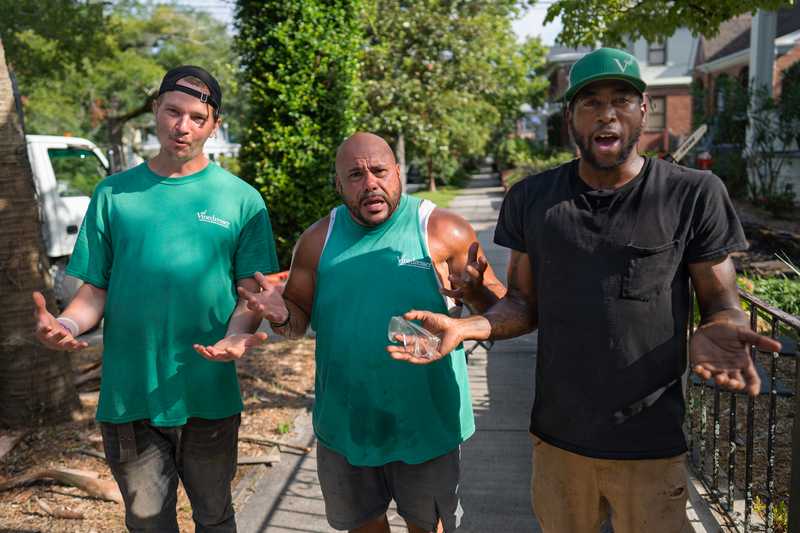When it comes to physical therapy, there are many misguided expectations about outcome quality and length of treatment. Many patients want to know how long they should continue with their physical therapy treatments, especially if they are not seeing the results they expect.
Unsatisfactory results may be due to several factors, including frustration, unrealistic expectations, a poor therapist match, and a lack of understanding about how a physical therapist can help.
In this article, we'll explore when to stop physical therapy and the potential dangers of quitting physical therapy too early. If you're feeling frustrated with your physical therapy experience, read on for some helpful tips to get the results you want!
Table of Contents
- How to Find a Licensed Physical Therapist
- How Long Should I Do Physical Therapy?
- How Long Does It Take for Physical Therapy to Work?
- Is Physical Therapy Necessary?
- When to Stop Physical Therapy
- The Danger of Stopping Too Early
- How to Get the Most Out of Physical Therapy: A Refreshing Approach
- Is It Time for an Upgrade?
How to Find a Licensed Physical Therapist
Before making any decisions about your medical care, it's first important to determine if you are getting the right support in the first place.
Why is this so important? The American Physical Therapy Association reports the following:
A growing problem throughout the country is the misuse or inappropriate advertisement of physical therapy services. People who are not licensed physical therapists have held themselves out to the public as providing "physical therapy" or "physiotherapy," or use the initials "PT" to describe their services. This characterization is misleading to the public, illegal in some states, and a disservice to individuals who are in need of physical therapy and who think they are receiving it, but in reality are not.1
What to Look For in a Provider
Your physical therapist can legally put the letters "PT" after his or her name because they hold an active license that required years of advanced training and annual continuing education. Always make sure you're working with a licensed physical therapist. This will ensure you're getting care from a provider that has earned a degree from an accredited institution and can safely treat your condition or injury.
As an alternative to asking your provider to show you their license, the Federation of State Boards of Physical Therapy provides a tool to check for yourself.
Curious to know what all those letters mean after your physical therapists name? You can learn about all of them here.
How Long Should I Do Physical Therapy?
Traditionally, the answer to this question has been "until you're better" or "as long as insurance will cover it."
But what does this actually mean? Who gets to define what "better" means: insurance, patient, or therapist?
Ultimately, how much PT or how many visits you may need depends on your condition, your goals, and your follow through. In rare cases, this means you may need to continue physical therapy for months or even years to see the full benefits, as long as you are working with the right physical therapist.
What Does It Mean to "DO Physical Therapy"?
It is common to refer to PT as something that is done to you. However, it's important to note that "doing physical therapy" can be misleading. These terms imply that physical therapy treatment is a passive modality, and this couldn't be further from the truth.
Rather, it would be more accurate to use the term "participate." In reality, many people don't realize that PT treatment is a partnership designed to help you sustainably recover and feel empowered in the process. If you are working with a physical therapist that is only focusing on passive modalities (e.g. massage, hot/cold therapy, ultrasound) or telling you what to do rather than working with you to determine a solution, it may be time for a change!
How Many Sessions of Physical Therapy are Necessary?
On average, physical therapy is prescribed for 6 to 12 visits.2 Depending on the frequency of visits each week, this equates to a total time of 2 weeks to 3 months. Of course, this can vary significantly by condition.
For example, if you have a chronic condition, such as arthritis or multiple sclerosis, you may need to participate in PT as needed over your lifetime to maintain your current level of function. For other conditions, such as a sports injury, you may only need treatment and support for a few weeks or months.
Physical Therapy is a Process With Lasting Benefits, Not a Quick Fix
When it comes to deciding how long to participate in physical therapy, the key is to work with your therapist to set realistic goals and expectations. They can help you determine how long you should continue with treatment based on your individual needs.
Keep in mind that it takes time, consistency, and effort to see results. Not only do injured or inflamed tissues need time to heal, but new habits need to be built as well.
Habits typically take a minimum of 2 months to take hold.3 So if you're expecting to see instant results, you need to be a little more patient. Physical therapy is definitely an investment in your long-term health and quality of life!
How Long Does It Take for Physical Therapy to Work?
This is a common question with a complicated answer. The truth is, there is no one-size-fits-all answer to this question. Plus, this question implies that PT is something you "do" once and then you're all set.
Instead, your physical therapist will give you tools to help you recover and continue managing any concerns in the future. Plus, they'll be available to offer further support as needed (no "one and done" approach here!).
In general, how long it will take to start noticing positive results will depend on the following factors:
- The severity of your condition
- The characteristics of your condition
- The types of physical therapy treatments you're receiving
- How consistent you are in your home physical therapy action plan (exercises, heeding advice)
- Your response to treatment
In general, you can expect to see some improvement within the first few weeks of executing your PT treatment plan. However, it may take longer to see significant results.
Can I Quit Physical Therapy?
If you're not seeing any improvement after a few weeks of active participation in your PT plan, don't give up! It's important to continue with your treatments and discuss with your physical therapist how to modify the treatment plan to make it work for you. There are many different types of PT treatment approaches, so it's important to find one that meets your needs.
You may also want to consider upgrading your PT provider if you're not seeing the results you want. When it comes to physical therapists, not all providers are created equal. If you're not happy with your current provider, it may be time to find a new one.
Finding a Physical Therapist to Fit Your Needs
When choosing a physical therapist, there are many factors to consider, such as:
- Their experience
- Their credentials
- Their specialties
- Their treatment approach
- Their personality
- Your budget
Take the time to find a clinician that you're comfortable with and feel confident will help you. Keep reading for more tips on what makes a great therapist below!
Is Physical Therapy Necessary?
If you're suffering from an injury, pain, or dysfunction that affects your daily life, the answer is absolutely yes.
However, rather than asking if it's necessary, I think the better question is: How can physical therapy take my life to the next level?
Most physical therapists will agree that regular visits can help you reach a goal that you never thought was possible. Rather than learning to live with the pain or a disability, a physical therapist will do their best to help you navigate your way to less pain, easier activities, and a deep understanding of how to manage and reduce the number of flareups for the foreseeable future.
Does Physical Therapy Really Work?
The simple answer is yes. Physical therapy does work for many reasons, such as reduced pain, better function, and less dependence on pain medications.4 The success of your PT course of care depends on many factors, including:
- Belief in your ability to get better
- Motivation to achieve your goals
- Understanding the true underlying cause(s) of your health issues
- Keeping up consistently with a program
- Giving yourself grace and patience as you make gradual progress
- The ability to build and adapt to new lifestyle habits and beliefs
Do I Have to Go to Physical Therapy?
Ultimately, it is up to you and your physical therapist to work together to decide if treatment is necessary and beneficial to you.
If you keep an open mind and your PT provider listens and caters specifically to your needs, the puzzle pieces will slowly fall into place and you'll start to notice some favorable changes.
Can I Do PT on My Own?
There are significant risks associated with DIY physical therapy. It's best to work with a trained professional first to get a proper diagnosis. Without getting at the root cause of your condition, you cannot understand how to manage it safely and independently. Exercises that look harmless may actually injure you further.
Remember, physical therapy is an evidence-based treatment that requires your active participation with a highly trained and licensed specialist for the best results!
When to Stop Physical Therapy
There are quite a few reasons why you might be thinking it's time to stop physical therapy. Let's review these to make sure you are stopping for the right reasons.
Pain is Getting Worse
If your pain is getting worse, it's important to talk to your physical therapist before discontinuing treatment. It's possible that they are not aware of how much pain you're in or that the intensity of your symptoms has changed. It's also possible that you are doing something outside of physical therapy that is aggravating your condition. For example, if you have low back pain, you may be exacerbating your symptoms by sitting at a computer all day without proper support.
If your physical therapist is aware of the changes in your pain and they are not able to adjust your treatment accordingly, it may be time to seek out a new PT provider.
It's Time to Refer Out
Another possibility is that your condition has changed and physical therapy is no longer the right treatment. In this case, your therapist should be able to refer you to a specialist who can help you better manage your pain.
If you're experiencing any of the following, it may be time to stop PT or find a new provider:
- Uncontrolled pain
- Increased dependency on pain medication
- Worsening symptoms
- Limited ability to participate in activities you enjoy
- Difficulty completing tasks of daily living
If you're experiencing any of these symptoms, it's important to talk to your physical therapist and/or physician. They may be able to adjust your treatment or refer you to a specialist who can help you better manage your pain.
Why is Physical Therapy Making Pain Worse?
There are a few reasons why PT may be making your pain worse.
-
The wrong diagnosis: You may have been misdiagnosed and treatment is not addressing the root cause of your pain.
-
Aggravating or worsening symptoms: Certain exercises or activities may aggravate your symptoms. If this is the case, your physical therapist should be able to modify your treatment plan.
-
Lack of attention to holistic factors: If you are experiencing severe stress, sleep deprivation, anxiety, and other negative lifestyle factors, these can largely affect the efficacy of your program.
Hitting a Plateau
If you feel like you've plateaued in your PT progress but haven't reached the goals you've set, it's important to talk to your physical therapist. Open communication is the best way to get the results you want so that you can work together.
On the other hand, plateaus do naturally happen. It's up to you to stay consistent and hopeful to break through that plateau. Your PT provider may come up with a new treatment approach to help you bust through it. Otherwise, it may be time to take a break as long as you work to maintain the progress you've made. Then when you notice any changes, for better or worse, you can reach out to your physical therapist and continue when you feel ready.
Limited Budget
Budget is a difficult, but important, conversation to have with your therapist. Many times, people will put off treatment because they don't have insurance or they're afraid of the cost. However, there are many options that can work within your budget.
Goals Reached
If you feel like you've reached your goals and are ready to fly solo, that's great! Be sure to have a conversation with your physical therapist so that they can help you transition out of physical therapy.
Your PT provider should have suggestions for things you can continue on your own to maintain the progress you've made. They may also be able to refer you to other resources, such as a support group or another type of therapy to continue to hold you accountable.
Confidence to Continue Independently
You may feel confident and ready to continue your exercises on your own. If your treatments are feeling repetitive, and you're no longer learning new things about your body, it may be time to take a break.
The goal with PT is to help you feel empowered to continue managing your body and symptoms. Some people get anxious at this point because they're worried they'll quickly slip back to their previous level. However, it's important to remember that all you need to do is stay consistent and tuned into your body. Plus, your physical therapist should only be one phone call away!
The Danger of Stopping Too Early
What do you do when physical therapy doesn't work? If you stop PT treatment too early, you may not reach your full healing potential. When you're in pain, it's easy to just want to get out of pain as quickly as possible. However, it's important to remember that physical therapy is a process and stopping too early is a common mistake.
If you stop treatment before you're ready, you may find that your pain quickly returns. It's important to chat with your physical therapist to minimize the following risks:
You Risk Re-injury
A big danger of stopping PT too early is that you may re-injure yourself. Stopping before you give your tissues time to heal and adjust means they are exposed to unnecessary risk of re-injury. This is especially true if you haven't taken the time to recognize what the underlying triggers of your pain or injury were in the first place. (Hint: They're usually complicated, ranging from complex daily movements to your mental health). This can quickly lead you back to square one without a clue how you got there.
Living a Lower Quality of Life
When you don't give your body—and mind—the time it needs to heal, you may find that your quality of life suffers. This is because pain can have a big impact on your mood, energy levels, and ability to do the things you love. It's easy to become withdrawn from life.
If you find that you're no longer able to do the things you love due to your pain, it is a sign that you should continue PT even if you're tempted to quit. Too many people skip out on physical therapy altogether or quit too early and settle into a life with pain or injury that they wish they could escape. Thankfully, once the right treatment approach is found, this can be a thing of the past.
New Injury
Finally, a new injury is a very real risk if physical therapy is stopped too early. Pain, injury, or even the fear of pain can lead to altered biomechanics with daily activities, such as walking and sitting. This puts unnecessary strain on your body that can eventually lead to an injury from repetitive stress.
Prevention by promoting the best possible mechanics in the first place is the key. The way the body is interconnected is complex and hard to comprehend without a movement expert guiding you, at least initially.
How to Get the Most Out of Physical Therapy: A Refreshing Approach
Honestly, it’s time to consider a new approach to physical therapy treatment if you’ve been asking yourself: "When should I stop physical therapy?"
Unfortunately, some outdated models of care for PT don't serve their patients well. For example, some physical therapists will see as many as 20 patients in one 8 hour day.5 This equates to a burned-out therapist, only a few minutes spent with your PT provider, and more time spent with their lesser-trained tech or assistant.
There's a Better Way
The right care should involve physical therapists that are passionate, attuned, and able to put their best foot forward to help you actively reach your goals. They have escaped the rat race of traditional care and want to make a true impact. And this is possible with a new and transparent model of care. Currently, the PT world is evolving to focus on patient empowerment through online education and flexible access to care via virtual physical therapy and beyond.
Here's what the focus should be on to get the care you deserve:
The Importance of Reassessing
Traditionally, an official re-assessment is only completed every 6 weeks, because insurance requires it. This leaves a lot of room for errors.
During each treatment session, it's important to reassess your progress and how your body is responding to treatment. This allows you and your physical therapist to make any necessary changes to your plan of care. Regular reassessment of your physical changes, beliefs, and overall motivation is key to staying on track.
Psychosocial Factors
Psychosocial factors are perhaps the under-addressed symptoms in healthcare. And when adequately considered, they can make the biggest difference in recovery. After all, we are complex beings that are largely affected by our past experiences, belief systems, lifestyle choices, and more. Do yourself a favor and find a physical therapist that takes your complete self into mind as they work with you. This holistic approach will do wonders for your progress.
Your mind and body are connected. When one is out of balance, it can lead to problems with the other. It's important to consider your mental health when you're in pain or recovering from an injury.
Your PT provider should create a safe and supportive environment to help address any underlying stressors that may be impacting your recovery. When these stressors are addressed, it can help reduce pain and improve function.
Consistency and Support
Many patients will cite that the support they receive is the most valuable part of treatment and making sustainable progress. They will jokingly point out that they just needed a coach or someone to hold them accountable. Feeling heard, supported, and being able to ask questions when feeling uncertain, are all important factors in making the recovery you deserve.
Is It Time for an Upgrade?
If you're asking yourself when to stop physical therapy, the only true reason to quit is when you're feeling confident and fully recovered to your absolute satisfaction.
Anything less than that? Rather than quitting PT, it just may be time for an upgrade.
As a quick review, here's what you should expect from a top-notch physical therapist:
- An individual with the appropriate credentials to provide care
- Dedicated one-on-one time that doesn't feel rushed
- A PT provider that listens and cares, who asks about your preferences, and works with you to design a treatment program (rather than just tell you what to do or provide passive treatments only)
- Consistent re-assessment to ensure that you are making progress as expected
- Continual education to help you feel empowered every step of the way and understand what you are doing and why you're doing it
- Transparent billing practices
CityPT physical therapists are trained to provide care above and beyond industry standards. We check all the boxes above, and we are dedicated to delivering physical therapy that truly changes lives. I couldn't be happier to be a part of this changing PT landscape, one that veers away from impersonal clinics focused on the bottom line, over truly changing the world one person at a time.
Are you ready for something refreshing and new? Book your City PT appointment to discover the difference. We are here to make sure that all your needs are met and you aren't quitting PT simply out of frustration.
Before you go, please read our disclaimer. This blog is intended for informational purposes only. We are not providing legal or medical advice and this blog does not create a provider-patient relationship. Always seek the help of a qualified medical professional who has assessed you and understands your condition.
References
Footnotes
-
APTA. "The Importance of Term and Title Protection." APTA.com. Published 1 October 2019. Accessed 11 April 2022. https://www.apta.org/advocacy/issues/term-and-title-protection/the-importance-of-term-and-title-protection ↩
-
McMillen, Matt. "Is It Time for Physical Therapy?" WebMD.com. Published 2011. Accessed 6 April 2022. https://www.webmd.com/fitness-exercise/features/physical-therapy-for-active-adults#1 ↩
-
Clear, James. "How Long Does It Take to Actually Form a New Habit?" Jamesclear.com. Accessed 6 April 2022. https://jamesclear.com/new-habit ↩
-
Şahin N, Karahan AY, Albayrak İ. Effectiveness of physical therapy and exercise on pain and functional status in patients with chronic low back pain: a randomized-controlled trial. Turk J Phys Med Rehabil. 2017;64(1):52-58. Published 2017 Aug 9. doi:10.5606/tftrd.2018.1238 ↩
-
Mesnick, PT, OCS, cMDT, David. "Understanding the Outpatient Physical Therapy Marketplace." PT 360. Published 2016. Accessed 6 April 2022. http://www.pt360atl.com/wp-content/uploads/2016/01/Understanding-the-Outpatient-Physical-Therapy-Marketplace-1.pdf ↩

JayDee Vykoukal is an author, holistic health coach, mom blogger, and passionate Doctor of Physical Therapy. She loves teaching healthy living, writing about motherhood, traveling and spending quality time with her family.

JayDee Vykoukal is an author, holistic health coach, mom blogger, and passionate Doctor of Physical Therapy. She loves teaching healthy living, writing about motherhood, traveling and spending quality time with her family.



